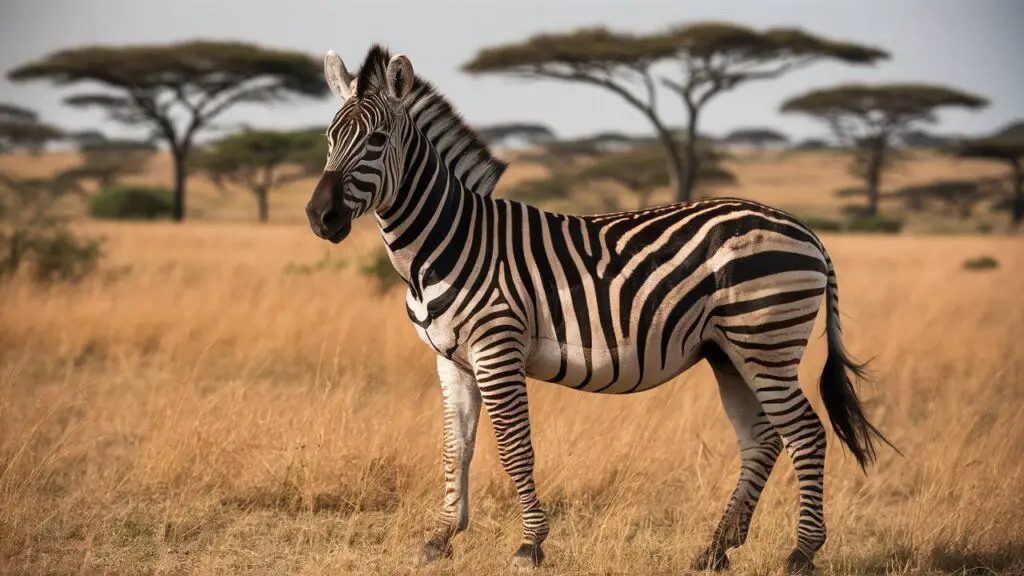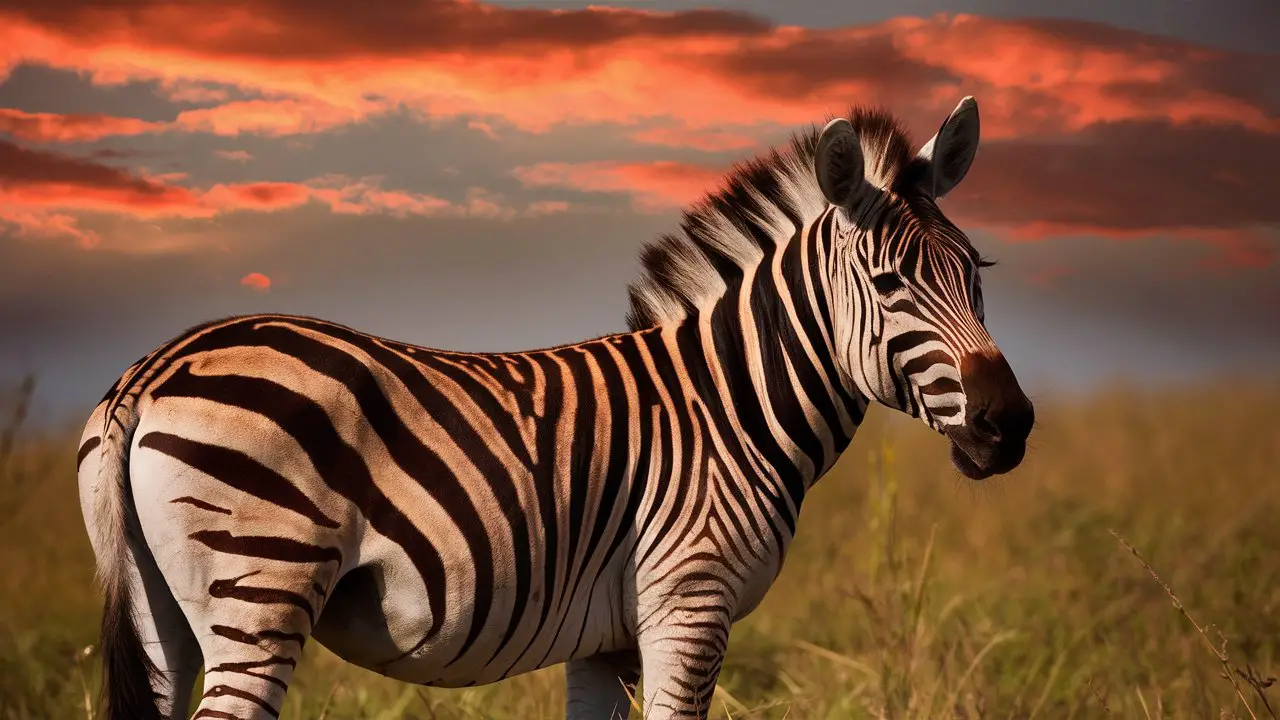Have you ever wondered about the unique black and white striped equines that roam the African savanna? As a close relative of horses and donkeys, zebras have their own captivating traits that set them apart. In this article, you will discover fascinating details about the different species of zebras, their distinctive stripe patterns, social behavior, habitats across Africa, what they eat, and how they interact with other wildlife. Delve into little known facts about how zebras communicate, how the stripes possibly help them survive, and other curiosities about these iconic animals. Let your knowledge of these charismatic herbivores grow by exploring the most intriguing facts about zebras – Africa’s stunning striped horses.
An Overview of These Unique African Animals
Physical Characteristics
Zebras are herbivorous equines known for their distinctive black and white striped coats. They are stocky, muscular animals with erect manes, long heads, and tufted tails. The stripes act as a natural camouflage to deter predators in their native grassland habitats. There are three species of zebras: plains zebras, mountain zebras, and Grevy’s zebras.
Social Behavior
Zebras are very social and live in stable family groups called harems. A harem typically consists of one stallion, several mares, and their young. Bachelor males form separate groups until they are old enough to challenge a stallion for control of his harem. Zebras communicate using a variety of vocalizations and facial expressions to maintain the social order within the harem. They are generally non-aggressive towards each other but the stallion will protect his group from predators and intruders.
Habitat and Distribution
Zebras inhabit the grasslands and savannas of eastern and southern Africa. Plains zebras have the widest distribution and live in grasslands and open woodlands over much of eastern and southern Africa. Mountain zebras are found in mountainous and hilly grasslands in southwestern Africa. Grevy’s zebras inhabit semi-arid grasslands in northern Kenya and southern Ethiopia.
Zebras require large amounts of grass and other plants to sustain themselves. They migrate long distances to follow the growth of new grass during the rainy seasons. However, due to loss of habitat and competition with livestock, zebra populations have declined dramatically. Conservation efforts are underway to protect remaining zebra habitats and limit poaching. With continued protection, zebra numbers should remain stable and these fascinating striped animals will continue to captivate people for generations.
Stripes and Patterns: The Significance of a Zebra’s Coat
Zebras are instantly recognizable by their distinctive black and white striped coats. However, zebra stripes are more than just a memorable pattern – they serve several important functions for the animals.### Camouflage
The bold stripes on a zebra’s coat act as an effective camouflage mechanism. When zebras stand together in large herds, their stripes make it difficult for predators to distinguish individuals. The stripes also create an optical illusion that makes it hard to judge the zebra’s outline and determine its size or distance. This “dazzle camouflage” confuses predators and hinders their ability to target specific zebras.
Temperature Regulation
Zebra stripes may help regulate body temperature. The black stripes absorb heat, while the white stripes reflect it. This may help zebras maintain a constant body temperature as the environmental temperature changes. The pattern of the stripes – narrower on parts of the body like the legs, wider on the torso – optimizes heat regulation based on the amount of body surface area in each area.
Insect Prevention
The bold contrast of zebra stripes may also help deter insects like horseflies that are attracted to the color black. The stripes break up the outline of the zebra’s body, making it more difficult for insects to land. Some research also suggests that the pattern of stripes creates an optical illusion that confuses insects, hindering their ability to estimate the zebra’s size and speed of movement. The striped pattern thus acts as an insect repellent, protecting zebras from bites that could lead to disease.
In summary, a zebra’s distinctive coat provides several benefits through camouflage, temperature regulation, and insect prevention. The black and white stripes are an adaptation that helps ensure the animal’s survival in the harsh African savanna.
Herd Life: Social Structure and Behavior of Zebras
Zebras are highly social animals that live in stable family groups called harems. A harem typically consists of a single stallion, several mares, and their young offspring. The stallion is the leader of the group and acts aggressively toward other males that come near his harem. He uses loud braying sounds, displays of dominance, and physical aggression to warn other males away.
Within the harem, zebras have a linear dominance hierarchy. The stallion is the most dominant, followed by the oldest mares. Young males eventually leave the harem when they become sexually mature to form bachelor groups or try to establish their own harem. Females remain in the harem for life. This social structure provides zebras protection from predators through group defense and allows mares to raise their foals together in a protective environment.
Zebra herds travel together, moving over large distances to find adequate food and water. They communicate using a variety of vocalizations and visual displays. Mares often nuzzle and groom each other to strengthen social bonds. Foals stay very close to their mothers for the first few months of life. As foals get older, they become more independent but continue to associate with and seek protection from the harem.
During the wet season when food is plentiful, harems come together to form large aggregations that can contain hundreds of individuals. In the dry season when resources are scarce, the herds break up into smaller harems again. These seasonal changes in group size allow zebras to balance the costs and benefits of group living. Large aggregations provide greater defense against predators, while smaller harems reduce competition for limited resources during times of scarcity.
In summary, zebras are highly gregarious and social equines that rely on stable family groups and herds for defense, resource acquisition, and offspring rearing. Their complex social behaviors and vocal communication allow them to form close-knit social bonds and navigate challenges together as a cohesive unit.

What’s on the Menu? The Zebra Diet and Eating Habits
Zebras are herbivores, meaning they solely consume plant matter. Their diet primarily consists of grass, though they also eat leaves, twigs, and bark. The types of grasses and plants zebras eat depend on the species of zebra as well as the location and climate they inhabit. ###Grasses
Grasses make up the majority of a zebra’s diet. Zebras graze on grasslands for many hours each day, eating varieties of grass including Rhodes grass, red oats grass, and buffalo grass. The moisture content of the grasses depends on the local climate, ranging from more succulent grasses in wetter areas to coarser, drier grasses in arid regions.
Herbs and Shrubs
In addition to grasses, zebras supplement their diet with various herbs, shrubs, leaves, and twigs. Favorites include acacia leaves and twigs, euphorbia, and aloe plants. The bitter aloe plant, in particular, provides zebras with vital nutrients and moisture during dry seasons or in times of drought.
Bark
When grasses and plants are scarce, zebras may strip and eat the bark from trees such as acacias. Bark provides nutrients but is less digestible, so zebras only eat it out of necessity. The inner layers of bark, known as cambium, contain sugars, starches, and proteins that can sustain zebras when other food sources are unavailable.
Zebras are well adapted to long migrations over vast distances in search of food and water. Their diet is sufficient for their needs, as zebras can live over 25 years in the wild. By sticking to a diet primarily of grasses and plants and opportunistically supplementing with bark and leaves when needed, zebras have thrived for millions of years on the African savanna.
More Interesting Facts About Zebras: Q&A
What is the classification of zebras?
Zebras belong to the horse family Equidae and the genus Equus. They are closely related to donkeys and horses. There are three zebra species: the Plains zebra, the Mountain zebra, and the Grevy’s zebra. The Plains zebra is the most common and widespread species.
How fast can zebras run?
Zebras are capable of running at high speeds for long distances. A zebra’s top speed is about 35 miles per hour. They use their speed and endurance to escape predators in the wild. Their stripes also make it difficult for predators to pick out a single zebra from a herd.
Do zebras live in herds?
Yes, zebras are very social animals and live in stable family groups called harems. A harem typically consists of one stallion, several mares, and their young offspring. Sometimes harems come together to form larger herds of up to several hundred individuals. However, zebras maintain a strict social hierarchy within their herds. Stallions establish territories and defend them from intruders.
What do zebras eat?
Zebras are herbivores, meaning they only eat plants. Their diet consists primarily of grasses, leaves, and shrubs. Zebras require a lot of food to satisfy their nutritional needs due to their size and activity levels. An adult zebra can eat up to 28 pounds of grass and leaves per day. They spend most of their day grazing and can travel long distances in search of food and water.
Do zebras sleep standing up?
No, zebras sleep lying down. They do not have the ability to lock their legs to sleep standing up like some other ungulate species. Zebras typically sleep at night to avoid their main predators like lions and hyenas. They will rest in open areas while one or more individuals remain alert to warn the herd of danger. After a few hours of sleep, zebras will stand up, groom, and start grazing and socializing again.
In summary, zebras are fascinating social equines that live and travel in family herds across the African savanna. Their distinctive black and white striped coats make them unique among horses. Although zebras share some characteristics with their close relatives, horses and donkeys, they are wild animals with their own complex behaviors and social structures.
Don’t Miss a Thing! Enhance Your Wildlife Photography with Ultra-X Night Vision Goggles.
GET NOW!

Conclusion
As we have explored in this article, zebras are truly fascinating creatures. From their iconic black and white striped coats to their complex social behaviors, zebras capture our imagination. By learning more about how zebras communicate, find safety in numbers, and care for their young, we gain appreciation for these unique equines. While threats to their existence remain, efforts to protect zebras allow us to safeguard an important part of Africa’s diverse wildlife. By supporting conservation initiatives, you play a role in ensuring zebras continue to roam Africa’s grasslands for generations to come. Zebras represent the exotic beauty and grandeur of the natural world. We must strive to understand them better and protect their place in the circle of life.





